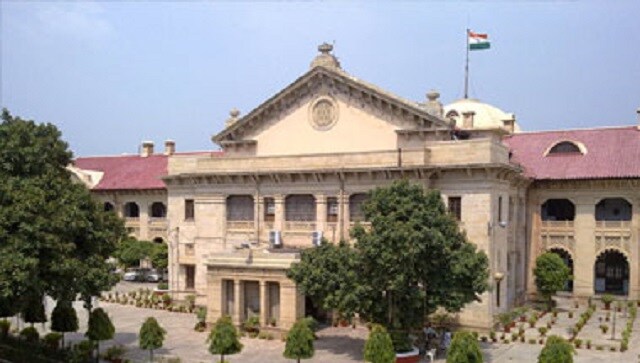Medical system in UP villages, small cities 'Ram bharose', says Allahabad HC on COVID-19 situation
The court made the observation over the death of Santosh Kumar, whose body was disposed of after doctors at a Meerut hospital failed to identify him

File image of Allahabad High Court.
Allahabad: The entire medical system in villages and small cities of Uttar Pradesh is at God's mercy ("Ram bharose"), the Allahabad High Court said on Monday while hearing a PIL over the coronavirus spread and the condition of quarantine centres in the state.
spread and the condition of quarantine centres in the state.
A High Court Bench of Justices Siddharth Verma and Ajit Kumar made the observation while taking into account the death of Santosh Kumar (64), who was admitted to an isolation ward at a Meerut hospital. The doctors there failed to identify him and disposed of the body as unidentified, according to a probe report.
Santosh had fainted at a hospital bathroom on 22 April and efforts were made to revive him but he died. The hospital staff could not identify the dead and failed to locate his file. Thus, it was taken as a case of an unidentified body. The body was packed in a bag and was disposed of, according to the probe report.
Commenting on it, the High Court on Monday said if this is the state of affairs at a medical college in the city like Meerut, then the entire medical system of the state pertaining to smaller cities and villages can only be taken to be like a famous Hindi saying, ''Ram bharose".
"If doctors and paramedical staff adopt such casual approach and show carelessness in the performance of their duty, then it is a case of serious misconduct because it is something like playing with lives of innocent people. The state needs to take stern action against those responsible," the court observed.
Upon perusal of the report submitted by district magistrates of five districts, the court said, "We have no hesitation in observing that health infrastructure is absolutely insufficient in city areas to meet the requirement of city population and in the rural areas the community health centres are virtually lacking in respect of life-saving gadgets."
The court directed the state government to provide sufficient health care infrastructure in compliance with its direction issued earlier.
On the issue of coronavirus vaccination, the court suggested that big business houses that take benefits under taxation laws by donating to various religious organisations may be asked to divert their funds for vaccines.
vaccination, the court suggested that big business houses that take benefits under taxation laws by donating to various religious organisations may be asked to divert their funds for vaccines.
Every nursing home/ hospital, which has more than 20 beds, should have at least 40 percent of their beds as intensive care units, the court said.
Every nursing home and hospital, which has more than 30 beds, should compulsorily have an oxygen production plant, the court added.
Every second and third-tier town of Uttar Pradesh should be provided with at least 20 ambulances and every village should be provided with at least two ambulances having intensive care unit facilities, the court suggested while fixing 22 May as the next date of hearing.
also read

UP panchayat polls: Samajwadi Party, BJP claim grand show in contest fought without party symbols
The counting of votes began Sunday morning at more than 825 centres across the 75 districts of Uttar Pradesh

Allahabad University to promote second, third year UG students without exams
As a preventive measure, the university had preponed the summer vacations from 15 May to 4 May. The university will now open on 5 July.

COVID-19 deaths in UP: Queues at cremation grounds, data discrepancies belie state govt's claims
When official claims are scrutinised in the context of long queues at cremation grounds and large-scale discrepancies in data, the picture becomes even more alarming.